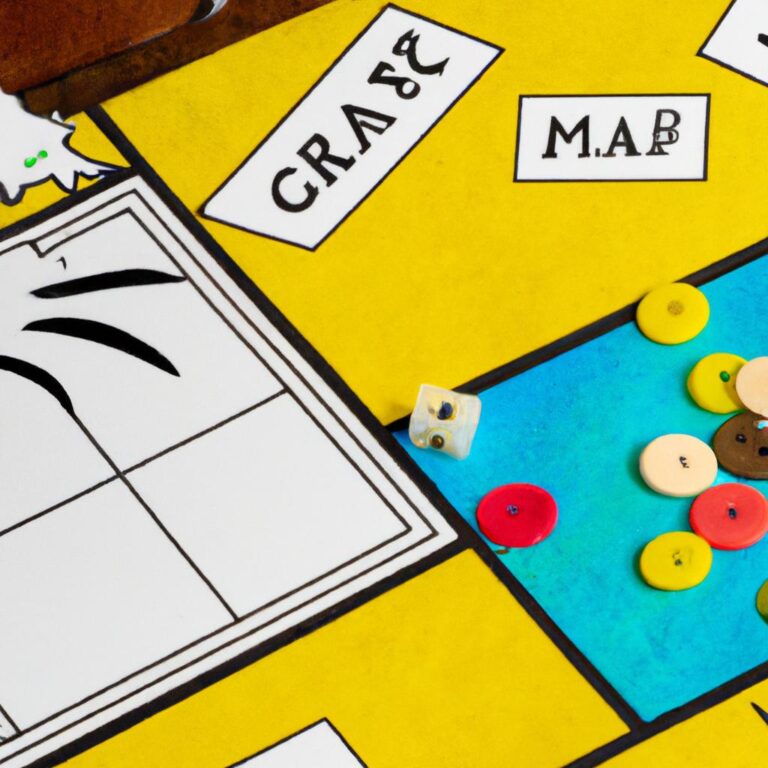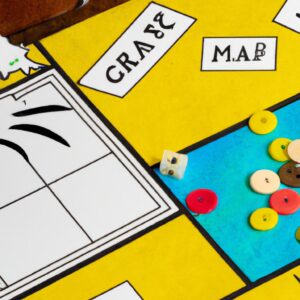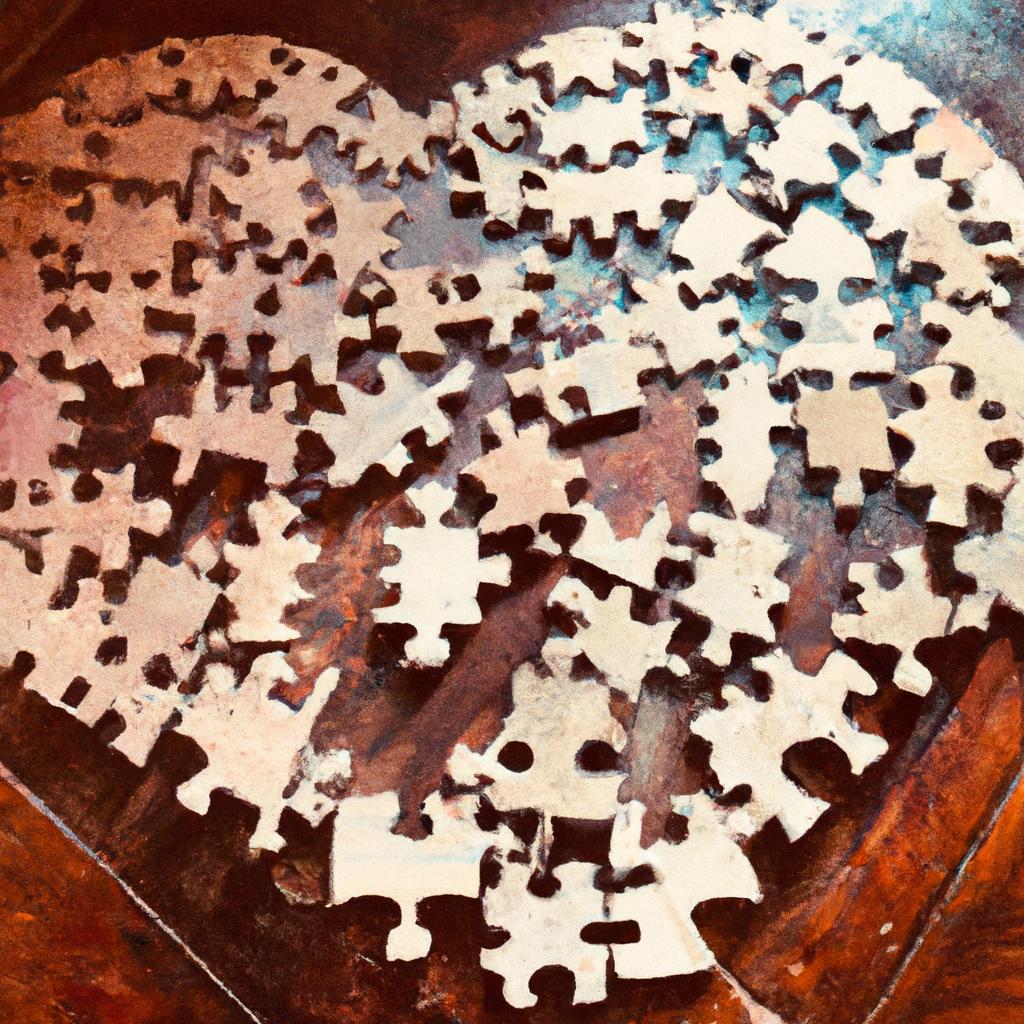Bring Fun and Togetherness with Homemade Board Games
Family game night is a classic tradition for many of us. Whether it’s a weekly gathering or just an occasional event, it’s always a good idea to bring the family together to share in some fun and laughter. There are so many options for board games these days, but sometimes there’s still no substitute for making your own. Crafting homemade board games can be an incredibly rewarding process and can bring a special kind of fun to your next family game night.
Homemade board games allow you to have complete control over the rules, pieces, board, and even the decorations. This not only means that you can tailor the game specifically to your family’s interests and needs, but you can also add your own creative touches to make the game even more unique. Crafting homemade board games also lets you get a little crafty and creative, so you can make something special that will be remembered for years to come.
Making your own board game is a great way to involve the entire family. With enough planning, it can be an opportunity for everybody to take part in the creative process, from designing the board to hand-painting the pieces. Not only does this bring everyone together, but it teaches kids about the importance of teamwork and encourages them to think about how to make the game more enjoyable.
Board games can transport us into different worlds or teach us new things. They can offer valuable lessons and insights, while also providing plenty of fun and laughter. Crafting homemade board games is a great way to give your family game night an extra dose of creativity and originality. So why not give it a try? With a bit of planning and some creative input, you can have a brand new, homemade board game that is guaranteed to bring endless hours of entertainment!
Board Games, Then and Now
Board games have existed for centuries and have been played all over the world. Many cultures created their own versions of gaming boards and pieces to play with. The earliest known game of this type was found in Egypt, dating back to 3500BCE. The game was called Senet and consisted of a board with thirty squares arranged in three rows of ten each. There were also two sets of five playing pieces.
Other cultures played similar games. The Ancient Greeks had a game called Petteia, while the Norse Vikings had a game called Tablut. India had Pachisi and Chaupar, and the Chinese had various games such as Go. These games were often used to teach strategic thinking and plan battles.
As these games spread throughout the world, various modifications were made. Some popular adaptations from around the world include Chess, Checkers, Mancala, Snakes and Ladders, and Backgammon. In the 20th century, board games became increasingly popular and started to include elements of chance and luck, making them more fun for all ages.
Crafting Materials for Homemade Board Games
Creating your own homemade board game is an enjoyable experience that the whole family can enjoy. But before you begin, it’s important to make sure you have all of the materials you will need. Here are some of the supplies you need to gather:
- Paint – Get a variety of colors so you can decorate your boards and pieces however you like.
- Glue – This is essential if you’re making any special pieces for your board game that require sticking together.
- Cloth – A piece of cloth can be used as a playfield mat, or to cover the board game pieces when not in use.
- Magnets – If you’re designing a tabletop board game, magnets can be used to keep the pieces in place while playing.
Having these supplies at hand makes crafting your own homemade board game much simpler and more enjoyable. Now, let’s look at the next step in the process, measuring your board game pieces!
Measuring Board Game Pieces
Having the correct measurements is an essential component of crafting your own homemade board game. Whether it’s dice, cards, or boards, precise measurements are key to making sure your game runs correctly. It’s important to use a ruler or measuring tape when measuring your game pieces.
When measuring a board game piece, start by looking at the size of the box. This will typically give you a good idea of the size and shape of the piece, which allows you to determine the necessary measurements. If there are multiple pieces, start with the largest one and measure out the others to fit inside.
When measuring out cards, it’s important to look at the size of the card in relation to the other pieces. All of the pieces must comfortably fit within the confines of the card, so it’s important to take into consideration any extras that may need to be added. Dice can also be tricky, as they must fit within the container that they are placed in. Again, look at the size of the container and adjust accordingly.
If you’re using magnets, make sure to measure carefully as the magnets should be strong enough to keep your pieces in place. Measure the width and thickness of the magnet and the area on the board where it will be placed. Make sure it’s strong enough to hold the pieces in place during play.
Finally, make sure to measure out the board itself. Consider the size of the game pieces, the size of the playing area, and how much room will be needed for decorations and embellishments.
Designing the Rules
Playing your homemade board game with family and friends can be a fun and interactive way to spend time together. But designing the right rules can be tricky! Here are some tips and suggestions to help you craft the perfect set of rules for your game.
- Keep it simple! Choose basic mechanics and concepts that can be easily understood by players of all ages.
- Focus on keeping the game balanced and fair. Review the game with multiple rounds so all players get an equal chance at winning.
- Be sure to include an interesting twist. Think of something unique that will make your game stand out from others.
- Add a variety of strategies for everyone to choose from. Different strategies keep the game fresh and exciting.
- Have fun with it! This is your game, so let creativity guide you in designing the rules.
Creating the perfect set of rules for your homemade board game doesn’t have to be difficult. Consider the tips above to help you find the right balance between creativity and fun.
Decorating Tips for Homemade Board Games
Adding decorations to your homemade board game is a great way to add fun to the game and make it stand out from other store-bought games. Here are some tips for how to make your homemade board game decorations look extra special:
- Use bright colors. Choose colors that are bold and eye catching to attract attention to the different parts of the game.
- Get creative. Be creative with the decorations and try to come up with unique ideas that will make the game stand out.
- Use materials that you have around the house. You don’t need to buy expensive materials for decorations, use items like buttons, ribbons, tin foil, fabric scraps, etc.
- Print out images or artwork that fits the theme of the game. Print out images and artwork that fit the theme of your game and glue them onto card stock or cardboard to make them more durable.
- Have fun! Don’t take it too seriously – just have fun with it and make sure everyone is having a good time during game night.
By using these decorating tips, you can make your homemade board game game stand out and make sure that everyone has a blast playing it.
Setting Up the Game
Getting ready to play a homemade board game may seem daunting, but it doesn’t have to be! Follow these easy steps and you’ll be ready to play in no time.
- Assemble all the components of the game according to the instructions.
- If you are using magnets, make sure they are properly secured to the game board.
- Organize the pieces into a playfield that is even and fair for all players.
- Make sure to designate a start line and end goal for each round or game.
- Have all the players agree on the rules and any objectives before starting the game.
- Set aside spare parts and pieces just in case one gets lost during the game.
Once you have finished setting up the game, all that is left is to grab your friends and family and enjoy some fun-filled Family Game Night with your homemade board game!
Making the Playfield: Fun Tips and Tricks
Designing the playfield of your homemade board game is essential to making it fun. It gives the players an area to move their pieces around in, while also providing a focal point for visual decorations. Here are some tips and tricks you can use when making the playfield for your homemade board game.
- Be creative! The more creative the board, the more fun it will be to play on. You can use multiple colors, shapes, and symbols to make it unique and eye-catching.
- Keep it simple. Too many overly complex elements can make the game confusing and detract from the fun.
- Plan ahead. Have a plan for how many pieces and boards you need, so you don’t end up with too little material or too much.
- Make sure everything is symmetrical. This will help give balance to the game which adds to the challenge and enjoyment.
- Think about the size. Consider the size of the table or play area where the game will be played. Make sure the board is big enough to fit all the pieces, but not too big that it becomes unmanageable.
These tips should help you create a visually stunning and enjoyable playfield for your homemade board game. With a bit of creativity, planning, and a steady hand you can design a board that will keep friends and family entertained for hours.
Types of Homemade Board Games
Homemade board games come in all shapes and sizes – from chess and checkers to snakes and ladders, there’s something for everyone. Each game has its own unique set of rules, some more complex than others. Here are a few of the most popular types of homemade board games:
- Chess: Chess is a classic strategy game that has been played for centuries around the world. The objective of the game is to capture the opponent’s king by placing it in checkmate. It requires skill and strategy to outwit your opponent.
- Checkers: Checkers, or draughts, is another classic board game where each player must try to capture the other’s pieces. It is normally played on an 8×8 board with 12 pieces for each player. The aim is to remove all of your opponent’s pieces before they can do the same to you.
- Snakes and Ladders: Snakes and ladders is a popular dice-based game where players must roll dice and move their pieces between squares on the board. The game is full of surprises as squares can have either snakes which take you back further, or ladders which help you progress quicker.
- Backgammon: Backgammon is the oldest known board game and involves two players rolling dice and then moving pieces around the board to reach their final destination. It is based on luck, but also involves strategy as players must decide which pieces to move and when.
These are just a few examples of the many different types of homemade board games that people can craft and enjoy for family game nights. With a bit of creativity and ingenuity, you can create your own unique game that will provide hours of entertainment for all players.
Family Fun Ideas
Family game night can be a great way to bond with your family and spend quality time together. To make it even more fun, why not set up team competitions or tournaments? This will help to keep everyone engaged and create an exciting atmosphere. Teams generally consist of 2-4 players, depending on the game, so you can mix up the teams or create specific ones for different kinds of games.
If you want to add a bit of healthy competition to the night, then you can award prizes for the winning team. Prizes could be anything from bragging rights, to candy or even tokens or coins. It all depends on your creativity and what kind of budget you have.
To make the teams even more interesting, you could assign special powers that only the team members have access to. For instance, one team might have an extra turn or get to choose their playing pieces first. There are endless possibilities for making the teams even more fun.
So why not spice up your next family game night by setting up team competitions or tournaments? Your family will be sure to love it!
Ensuring Fair Play
Family game nights should be a fun and competitive environment for everyone involved. Disputes over rules can quickly take the joy out of game night, so it is important to make sure that everybody is clear on what the rules are and how they should be enforced. To ensure fair play, follow these tips:
- Discuss any changes to the rules before the game starts.
- Set expectations for how the game should be played.
- Be clear when explaining the rules to each player. Take time to answer any questions or concerns that players have.
- Make sure that all players understand the implications of breaking or bending the rules.
- Create an environment that is respectful and encourages everyone to be honest in their opinions.
- Check-in regularly throughout the game and address any potential disputes before they become an issue.
By following these tips you’ll be able to ensure that there are no problems with disputes over rules and that Family Game Night remains a fun and enjoyable experience for everyone.
Conclusion
Homemade board games are a fantastic way to make family game night fun and engaging. Not only do these games provide an opportunity for creative expression, but they also give family members an opportunity to bond over some friendly competition. Crafting your own board games requires some basic materials, an understanding of measurement, design, decoration, assembly, and the playfield. Furthermore, there are many different types of homemade board games that can be made with varying levels of complexity. With a bit of planning and organization, it is possible to create an enjoyable and entertaining board game that the whole family will love.
Family game nights don’t have to be limited to just one type of game. Variety is always a good way to keep it interesting! Consider incorporating team competitions or tournaments, to help keep things fresh and entertaining. Most importantly, ensure that everyone is playing fairly and according to the rules. No matter what type of game is chosen, getting together and having fun should always be the top priority!
comments: 0





